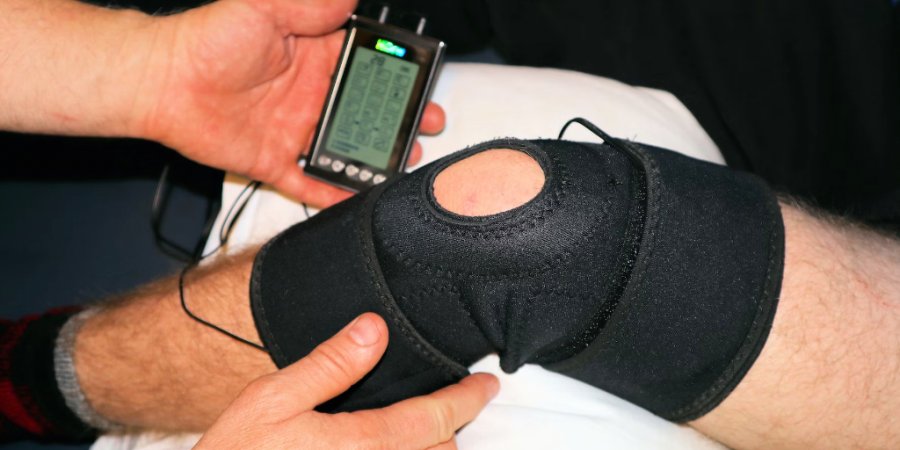The 8-Minute Rule in Physical Therapy

Are you familiar with the 8-minute rule in physical therapy? If not, you're in the right place! This article will dive into the details of the physical therapy 8-minute rule and its importance in the healthcare industry.
The 8-minute rule is a billing guideline that determines how therapy services are billed. It states that in order to bill for one unit of therapy, a therapist must provide at least eight minutes of skilled service. Understanding this rule is crucial for physical therapy providers and patients alike, as it impacts insurance reimbursement and treatment planning.
In this article, we will explore the ins and outs of the physical therapy 8-minute rule, including how it is calculated, the implications for therapy sessions, and its impact on patient care. Whether you're a physical therapy provider looking to navigate the complexities of billing or a patient seeking clarity on insurance coverage, this article will provide valuable insights to help you make informed decisions.
Join us as we demystify the physical therapy 8-minute rule and shed light on its significance in the world of healthcare. Let's get started!
What is the 8-minute rule in physical therapy?
The 8-minute rule is a billing guideline that determines how therapy services are billed in physical therapy. According to this rule, in order to bill for one unit of therapy, a therapist must provide at least eight minutes of skilled service to the patient. This rule was established by the Centers for Medicare and Medicaid Services (CMS) and is widely followed in the healthcare industry.
The purpose of the 8-minute rule is to ensure that therapy services are billed accurately and reflect the amount of time spent providing skilled care to patients. It helps in determining the appropriate reimbursement for therapy services and ensures that patients receive the care they need.
It's important to note that the 8-minute rule applies to the total time spent with the patient, including direct one-on-one time, as well as any time spent on activities related to the patient's care, such as reviewing records or writing progress notes. This rule applies to various types of therapy, including physical therapy, occupational therapy, and speech therapy.
Understanding the components of the 8-minute rule
To understand the 8-minute rule better, it's essential to familiarize yourself with its key components. The rule consists of three main elements: direct one-on-one time, time spent on activities related to patient care, and total time.
Direct one-on-one time refers to the time spent providing skilled therapy services directly to the patient. This can include hands-on therapy, exercises, or any other interventions that require the therapist's expertise. It's important to note that only skilled services can be considered for billing under the 8-minute rule. Routine tasks that can be performed by the patient or a non-skilled caregiver do not count towards billable time.
The time spent on activities related to patient care refers to any additional time spent on tasks that are directly related to the patient's care but may not involve direct one-on-one therapy. This can include reviewing medical records, documenting progress notes, or consulting with other healthcare professionals such as doctors involved in the patient's care. It's important to accurately track and document this time to ensure compliance with the 8-minute rule.
The total time is the sum of the direct one-on-one time and the time spent on activities related to patient care. To bill for one unit of therapy, the total time must be at least eight minutes. For example, if a therapist spends six minutes providing direct one-on-one therapy and two minutes reviewing the patient's progress notes, the total time would be eight minutes, making it eligible for billing.
Importance of accurate documentation for the 8-minute rule

Accurate documentation is crucial for compliance with the 8-minute rule. It not only ensures that therapy services are billed accurately but also helps in justifying the medical necessity of the services provided. Proper documentation provides a clear picture of the patient's condition, progress, and the skilled services provided, which is essential for insurance reimbursement.
When documenting therapy sessions, it's important to include details such as the start and end time of the session, the interventions provided, and any activities related to patient care. This documentation should be clear, concise, and reflect the medical necessity of the services provided. It should also include the therapist's professional judgment and clinical reasoning for the interventions chosen.
Accurate documentation is not only important for billing and reimbursement but also plays a vital role in treatment planning and continuity of care. It helps in tracking the patient's progress, identifying areas of improvement, and making informed decisions regarding the course of treatment. It also ensures effective communication among healthcare professionals involved in the patient's care, facilitating coordinated and comprehensive care.
In addition to accurate documentation, it's important to maintain proper coding and billing practices to comply with the 8-minute rule. This includes assigning the appropriate codes for therapy services, submitting claims in a timely manner, and following the guidelines set by insurance payers. Adhering to these practices helps in avoiding claim denials and ensuring timely reimbursement for therapy services.
Common challenges in implementing the 8-minute rule
Implementing the 8-minute rule in physical therapy practice can be challenging due to various factors. One of the common challenges is accurately tracking and documenting the time spent on activities related to patient care. It can be difficult to allocate time specifically for these tasks, especially in busy clinical settings where therapists often have multiple patients to attend to.
Another challenge is managing time effectively during therapy sessions to ensure compliance with the 8-minute rule. Therapists need to balance providing quality care with meeting the minimum time requirement for billing. This requires careful planning and organization to maximize the use of time without compromising the quality of care provided.
Furthermore, understanding the intricacies of insurance reimbursement and billing can be complex for both therapists and patients. The 8-minute rule is just one aspect of the billing process, and navigating through the various coding and documentation requirements can be overwhelming. Lack of clarity and understanding can lead to errors in billing, claim denials, or delayed reimbursement.
Tips for effectively managing time under the 8-minute rule
Managing time effectively is crucial for complying with the 8-minute rule while providing quality care to patients. Here are some tips to help physical therapy providers manage their time more efficiently:
- Plan and prioritize: Before each therapy session, create a plan and prioritize the interventions based on the patient's goals and needs. This will help in utilizing time effectively and ensuring that the minimum time requirement is met.
- Utilize technology: Utilize electronic documentation systems and scheduling software to streamline documentation and appointment scheduling. These tools can help in tracking time, managing patient records, and generating accurate reports for billing purposes.
- Delegate non-skilled tasks: Delegate routine tasks that can be performed by the patient or a non-skilled caregiver to free up time for skilled therapy services. This can include exercises, stretches, or other activities that can be easily taught to the patient or their caregiver.
- Streamline documentation processes: Develop standardized templates and documentation protocols to ensure consistency and efficiency in documentation. This will help in saving time and reducing the chances of errors or omissions in documentation.
- Continuously educate and train: Stay updated with the latest coding and documentation guidelines to ensure compliance with the 8-minute rule. Provide regular training and education to therapists and staff members to enhance their understanding of billing practices and requirements.
Impact of the 8-minute rule on reimbursement and billing

The 8-minute rule has a significant impact on reimbursement and billing for therapy services. Understanding this rule is crucial for physical therapy providers to ensure accurate billing and timely reimbursement. Here are some key aspects of the 8-minute rule's impact on reimbursement and billing:
- Units of therapy: The 8-minute rule determines the number of units of therapy that can be billed for a particular session. Each unit represents a specific time increment, usually 15 minutes. To bill for one unit, a therapist must provide at least eight minutes of skilled service. The total time spent with the patient determines the number of units that can be billed.
- Reimbursement rates: Reimbursement rates for therapy services are often based on the number of units billed. Insurance payers set specific rates for each unit of therapy, and the total reimbursement is calculated based on the number of units billed. Accurate documentation and compliance with the 8-minute rule are essential to ensure appropriate reimbursement.
- Insurance coverage: The 8-minute rule also impacts insurance coverage for therapy services. Insurance policies often specify the minimum time requirement for therapy sessions to be eligible for coverage. Understanding the 8-minute rule helps patients and providers navigate insurance requirements and ensure that therapy services are covered.
Strategies for maximizing efficiency while adhering to the 8-minute rule
While adhering to the 8-minute rule can be challenging, there are strategies that physical therapy providers can implement to maximize efficiency without compromising the quality of care. Here are some strategies for managing time effectively and maximizing efficiency:
- Time blocking: Allocate specific time slots for different tasks, such as direct one-on-one therapy, documentation, and activities related to patient care. This helps in managing time more effectively and ensures that all necessary tasks are completed within the designated time.
- Streamline administrative tasks: Minimize administrative tasks by utilizing technology and delegating non-skilled tasks to free up time for skilled therapy services. This can include automating appointment scheduling, utilizing electronic documentation systems, and outsourcing billing and coding tasks.
- Prioritize patient-centered care: Focus on providing patient-centered care by tailoring interventions to the individual needs and goals of each patient. This helps in maximizing the impact of therapy services and ensures that the time spent with the patient is meaningful and effective.
The role of technology in streamlining compliance with the 8-minute rule
Technology plays a crucial role in streamlining compliance with the 8-minute rule and improving overall efficiency in physical therapy practice. Here are some ways technology can help in adhering to the 8-minute rule:
- Electronic documentation systems: Electronic documentation systems streamline the documentation process by providing templates, prompts, and reminders for accurate and efficient documentation. These systems also allow for easy tracking of time spent on activities related to patient care and generate reports for billing purposes.
- Scheduling software: Scheduling software helps in managing appointments and allocating time slots for therapy sessions and other tasks. It ensures that therapists have a clear schedule and can plan their time effectively to meet the requirements of the 8-minute rule.
- Telehealth platforms: Telehealth platforms have become increasingly popular in the healthcare industry, allowing therapists to provide virtual therapy services to patients. These platforms often include built-in timers and documentation features, making it easier to track time and ensure compliance with the 8-minute rule.
Training resources for physical therapists on the 8-minute rule
To ensure compliance with the 8-minute rule, physical therapists can access various training resources and educational materials. These resources provide in-depth information on the 8-minute rule, coding and documentation guidelines, and best practices for billing and reimbursement. Here are some training resources that physical therapists can explore:
- Professional organizations: Professional organizations such as the American Physical Therapy Association (APTA) offer educational resources, webinars, and training courses on billing and coding practices, including the 8-minute rule.
- Online courses and workshops: Online platforms and educational websites offer courses and workshops specifically designed for physical therapists on topics related to billing, coding, and compliance with regulations such as the 8-minute rule.
- Coding and billing consultants: Hiring coding and billing consultants who specialize in physical therapy can provide valuable guidance and support in understanding and implementing the 8-minute rule. These consultants can provide personalized training and help in developing efficient coding and documentation practices.
Conclusion
The physical therapy 8-minute rule is a crucial guideline that determines how therapy services are billed in the healthcare industry. Understanding this rule is essential for physical therapy providers to ensure accurate billing, timely reimbursement, and effective treatment planning. Compliance with the 8-minute rule requires accurate documentation, efficient time management, and an understanding of insurance reimbursement and billing practices.
By implementing strategies such as time blocking, utilizing technology, and prioritizing patient-centered care, physical therapy providers can navigate the complexities of the 8-minute rule while maximizing efficiency and maintaining high-quality care. Continuous education and training on the 8-minute rule and related billing practices are essential for staying updated and ensuring compliance.
As the healthcare industry continues to evolve, physical therapy providers must adapt to changing regulations and guidelines. By staying informed and implementing best practices, physical therapy providers can navigate the intricacies of the 8-minute rule and provide optimal care to their patients.
Previous Posts: